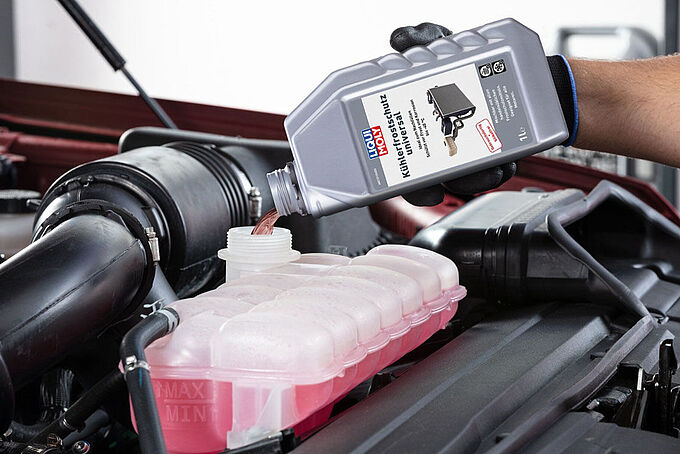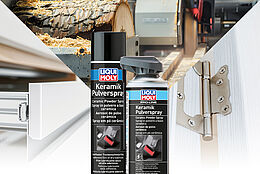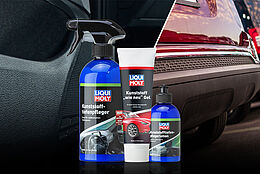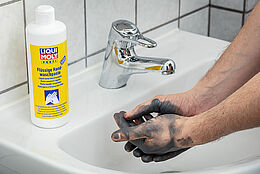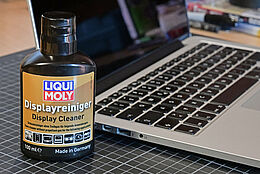- 06/02/2025
- 3min
P-OAT Radiator Antifreeze: optimum choice for many vehicle models

Radiator Antifreeze is one of the essential operating fluids for an engine. Contrary to the name, it not only protects against frost, but is also responsible for the performance and protection of the cooling system and engine all year round. A high-quality radiator antifreeze fulfills several important functions:
Cooling and thermal management: It elevates the boiling point of the cooling water, prevents evaporation and keeps the operating temperature stable.
Frost protection: It prevents the coolant from freezing at low temperatures.
Corrosion and cavitation protection: It prevents rust formation and protects sensitive components such as the antifreeze pump, cylinder head and radiator from damage.
Protection against water deposits andfoaming: It minimizes limescale and prevents foaming that could affect cooling performance.
Why a new radiator antifreeze?
Our new P-OAT GE radiator antifreeze combines organic additives with phosphates, thus offering another technology option alongside existing products. This formulation has been specially developed to meet specific vehicle manufacturer specifications.
In particular, the approval by Ford requires a radiator antifreeze with this active ingredient combination. With P-OAT technology, we are responding to this requirement in a targeted manner.
This is not about “better or worse” compared to other products in our range, but about expanding the portfolio – similar to offering engine oils that have different approvals.
Organic vs. inorganic inhibitors
A major difference in radiator antifreeze products is the type of inhibitors that provide corrosion protection.
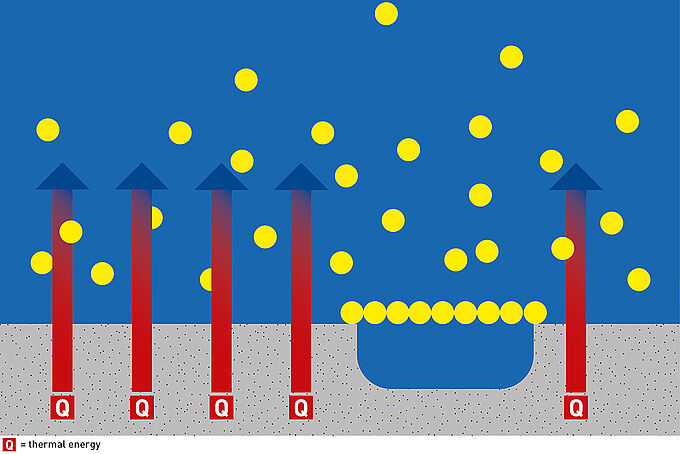
Organic inhibitors (OAT – Organic Acid Technology):
These inhibitors work selectively. They remain inactive until they are needed and only react where corrosion protection is required. This results in a longer service life and better heat dissipation.

Inorganic inhibitors:
These form a continuous protective layer on the metal surfaces in the cooling system. This layer is permanently present and ensures that no corrosion occurs at all. However, this layer can continue to build up over time, which can negatively affect heat dissipation. To avoid this, the proportion of silicates and other inorganic inhibitors is systematically reduced.
P-OAT – the hybrid technology:
P-OAT combines organic additives with phosphates. The goal: achieving the best possible corrosion protection without negatively affecting heat dissipation. P-OAT thus combines the advantages of both worlds – the targeted protective effect of organic additives with the proven immediate effect of inorganic inhibitors.
Which radiator antifreeze is the right one for my vehicle?
Our radiator antifreeze products differ depending on the additive technology and approvals of the vehicle manufacturer. To find the right product for your vehicle, simply use our oil guide. This will give you a precise recommendation based on the manufacturer’s specifications.

